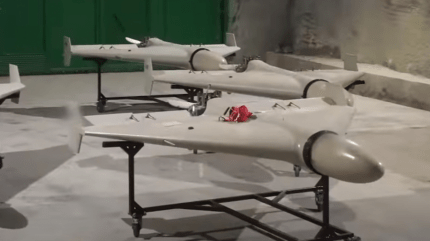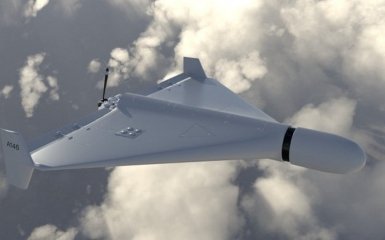The Russian Federation has significantly increased the production of Shahed-136 drones. In particular, in the SEZ "Alabuga" the production of these drones reached 6 thousand units - a year earlier than planned.
Points of attention
- Russian Federation significantly increases production of Shahed-136 drones through a contract with Iran, impacting international security and causing concern for Ukraine.
- Despite Ukraine's interception success rate of around 86%, a significant number of Russian Shahed drones manage to penetrate defenses, posing a continuous threat.
- Analysis shows an increase in the average daily number of drones launched by Russia over Ukraine, with fluctuations in production rates and potential challenges with the supply chain.
- The high casualty rates of Russian drones present challenges for Alabuga to maintain production levels, highlighting the reliance on imported components and potential vulnerabilities.
- Strengthening measures to block components necessary for Shahed drones could potentially reduce the number of successful attacks, impacting the effectiveness of Russian military strategy.
Russia has significantly increased the production of Shaheds
As the Institute for Science and International Security writes, in early 2023 JSC "Alabuga" signed a franchise contract with Iran for the amount of 1.75 billion dollars for the supply of 6,000 drones for the Russian army by September 2025.
Data on Russian Shahed drone launches collected by the Ukrainian military indicate that Alabuga is ahead of its production schedule and has already delivered about 4,500 of the promised 6,000 drones by the end of April 2024 and more than 6,000 by the end of August 2024.
It is noted that Alabuga has reached an annual production rate of approximately 4,700 drones per year and can fulfill its commitment to supply 6,000 drones to the Russian army a year early, around the end of August 2024. If it continues to purchase all the necessary sub-components from abroad, it can supply an additional 4,700 drones by September 2025, analysts believe.

How many Shaheds does the Russian Federation launch in Ukraine?
Analysts also note an increase in the average daily number of drones launched by the Russian Federation over Ukraine. So, from April 2023 to September 2023, an average of 14 Shahed drones were used per attack, but then from September 2023 to August 2024, the average increased to 21 drones per attack.
According to the report, the number of Russian drone attacks decreased between April and July 2024.
During the same period, Alabuga produced fewer drones on average each month, down from 410 per month from January 2024 to April 2024 to around 371 drones per month from May 2024 to July 2024.
This drop could be due to stockpiling of drones for future use, the possibility of lower demand from the Russian military due to changing priorities and economic constraints, disruptions or reductions in production at the Alabuga plant, or lower-than-desired stocks of imported materials due to difficulties with obtaining critical components from abroad.
At the same time, data for August 2024 (and previous data for September) show a sharp increase in the number of launches. Between August 1 and 31, 2024, Russia launched 790 Shahed missiles against Ukraine, almost double the 426 launched during the same period in July 2024.
Between September 1 and 26, 2024, according to Ukraine, Russia launched 1,131 Shahed missiles against Ukraine, which is almost three times more than the 426 launched during the same period in July 2024.
Ukraine effectively intercepts a large number of Shahed drones. Between April 2023 and the end of August 2024, Ukraine maintained an average interception rate of approximately 86 percent.
At the same time, despite Ukraine's impressive results in intercepting Russian Shahed drones, for the entire estimated period of time, about 14 percent managed to overcome the defense, which is at least 878 Shahed drones, analysts emphasize.
A drawback of the Russian strategy, but a success for Ukraine and the West, is that Russia needs to launch 100 Shahed 136 drones so that an average of 14 of them hit their targets... These high casualty rates mean that Alabuga must maintain high production levels and buy significantly more electronics and other components from abroad.
They also note that strengthening measures to block the export of components necessary for "Shaheed" may lead to a decrease in the number of successful attacks.









